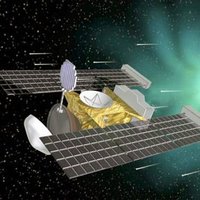
Stardust was the first NASA mission dedicated to exploring a comet. The mission collected comet samples by flying within 149 miles of Comet Wild 2 in January 2004. The spacecraft passed the comet at 13,000 mph. The thousands of comet particles were captured using aerogel, which is a special type of foamed glass, made so lightweight that it is barely visible and almost floats in air. To collect the comet samples, Stardust traveled two-billion miles to meet Comet Wild 2 and then another billion miles to get back home. The samples returned to Earth in January 2006. Preliminary analysis was conducted until August. The preliminary results appear in the December 15 issue of Science. What they found includes Mg-rich silicates, such as pyroxene (MgSiO3; Px) which are intermixed with amorphous silicates and Fe-Ni sulfides. Analysis of additional Stardust samples is ongoing.

<< Home